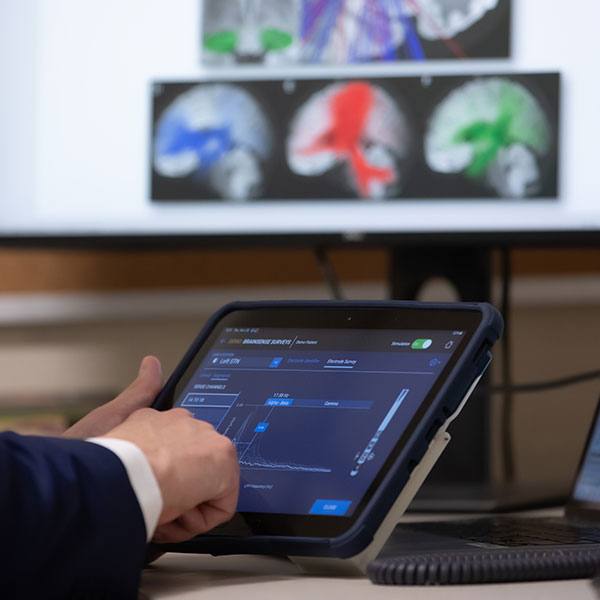
Bad back? It's why many people seek medical care. Nonoperative approaches such as physical therapy are typical, first-line treatments for back pain. But minimally invasive robotic spine surgery is improving recovery and long-term outcomes for some patients who need surgery.
James "Sonny" Rivera describes his lower back pain vividly: "A hot burning rod going down my leg" and "a lightning bolt hit me in my back."
While Sonny remembers having back pain since he was a teen, a 2021 ATV accident made his pain intolerable when he stood, walked a short distance or rolled over in bed. "I got very little sleep for probably two years," says Sonny, 59, of Fort Dodge, Iowa.
Professionally and personally, Sonny's life was on hold. He couldn't work. Favorite hobbies like running, fishing, golfing and coaching youth wrestling were out.
"Just spending time with my grandkids outside playing, I wasn't able to do that anymore," Sonny says. "I think that brought me down."
Journalists: Broadcast-quality video (1:25) is in the downloads at the end of this post. Please courtesy: "Mayo Clinic News Network." Read the script.
Spine surgery recommended
Through his employer, Sonny participated in a benefit that referred him to the Mayo Clinic Complex Care Program. The program offers patients with an abnormal MRI or a local healthcare professional's referral to receive an advanced spine review and care plan by Mayo spine experts.
Dr. Mohamad Bydon, a Mayo Clinic neurosurgeon and editor of "Back and Neck Health: Mayo Clinic Guide to Treating and Preventing Back and Neck Pain," first saw Sonny via a video appointment.
"It was really easy to talk to him," Sonny says. "He answered all my questions. I felt really comfortable."
After Sonny's review, it was recommended he travel to Mayo Clinic in Rochester, Minnesota, for further evaluation and potential surgery.
Dr. Bydon recommended minimally invasive, robotic spinal fusion surgery for Sonny's compressed nerves and spinal instability. Research has shown that the use of robotics can offer greater accuracy when placing surgical instruments and lowers rates of reoperations.
"What that means to the patient is improved recovery, lower blood loss, lower risk of transfusion — additionally, better long-term outcomes," says Dr. Bydon, the Charles B. and Ann L. Johnson Professor of Neurosurgery and an expert in complex spinal surgery and spinal oncology.
Discharged next day
Standard fusion surgery requires a four-day hospital stay. With the robotic, minimally invasive approach, Sonny was discharged a day after surgery.
"I was really surprised about the recovery," Sonny says. "I had no pain, and I was able to walk normally.
"Now I walk around, I don't have any problems. My wife notices that I'm in a better mood all the time. It was affecting me not only physically, but mentally. And now it's great. I feel great."
A photo of Sonny, fish in hand, showed Dr. Bydon how well his patient is progressing.
"One of the great privileges of practicing at Mayo Clinic is taking care of patients like that and being able to see them advance and go on with their lives," says Dr. Bydon.
While the surgery may be called minimally invasive, Sonny thanks Dr. Bydon and team for making a big impact on him. "It's made a huge difference in my life," Sonny says.
Read more on Sonny's experience with Mayo Clinic Complex Care Program.
Related Articles







